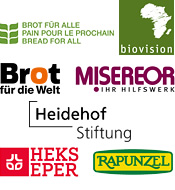GMOs: crops and traits
Global area of genetically modified crops in 2008 and 2018 by trait (above) and by crop type (below). Herbicide tolerance and/or insect resistance includes both single and stacked traits.
The same old story
Since their introduction in 1996, GMOs have been promoted as a panacea for tackling world hunger, malnutrition, poverty and drought. However, to date traits such as drought tolerance or enhanced provitamin A content have not yet been commercialised. Herbicide tolerance and insect resistance remain by far the dominant traits. In 2018, more than 99% of the 189.8 million hectares under cultivation with GMOs were planted with crops that were herbicide tolerant (45%), insect resistant (12%) or combined both traits (42%). The “Others” category includes a few hundred hectares of virus resistant papaya and squash. The cultivation of GM crops also remains limited to the same four crops: soybeans, maize, cotton and rapeseed. In 2018, 95.9 million hectares were planted with soybeans, followed by maize (58.9m ha), cotton (24.9m ha) and canola (10.1m ha).
Sources
1 International Service for the Acquisition of Agri-biotech Applications (ISAAA). Global Status of Commercialized Biotech/GM Crops, editions 2008 and 2018 (ISAAA Brief 39-2008 and ISAAA Brief 54-2018) http://www.isaaa.org/resources/publications/briefs/default.asp


